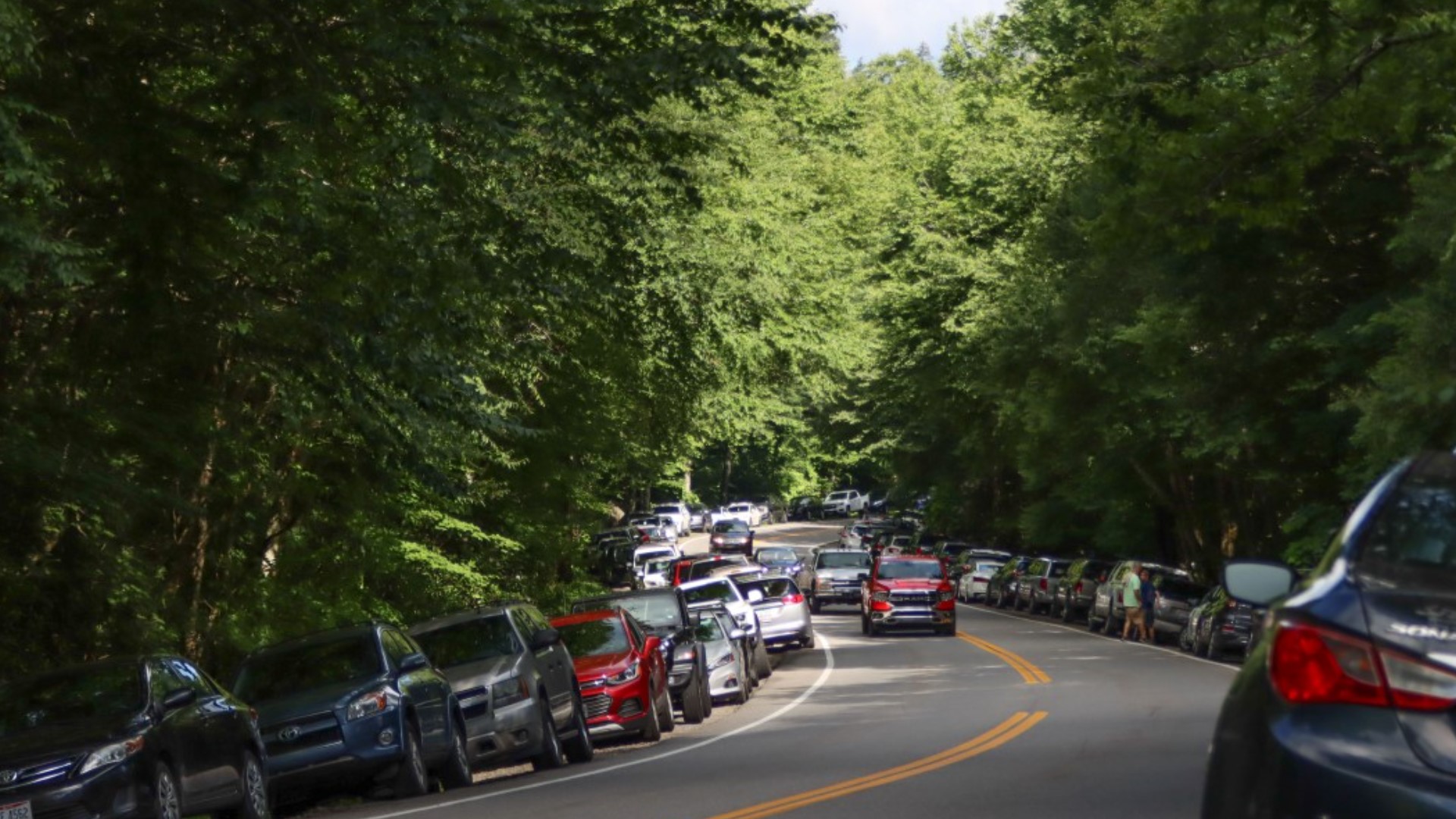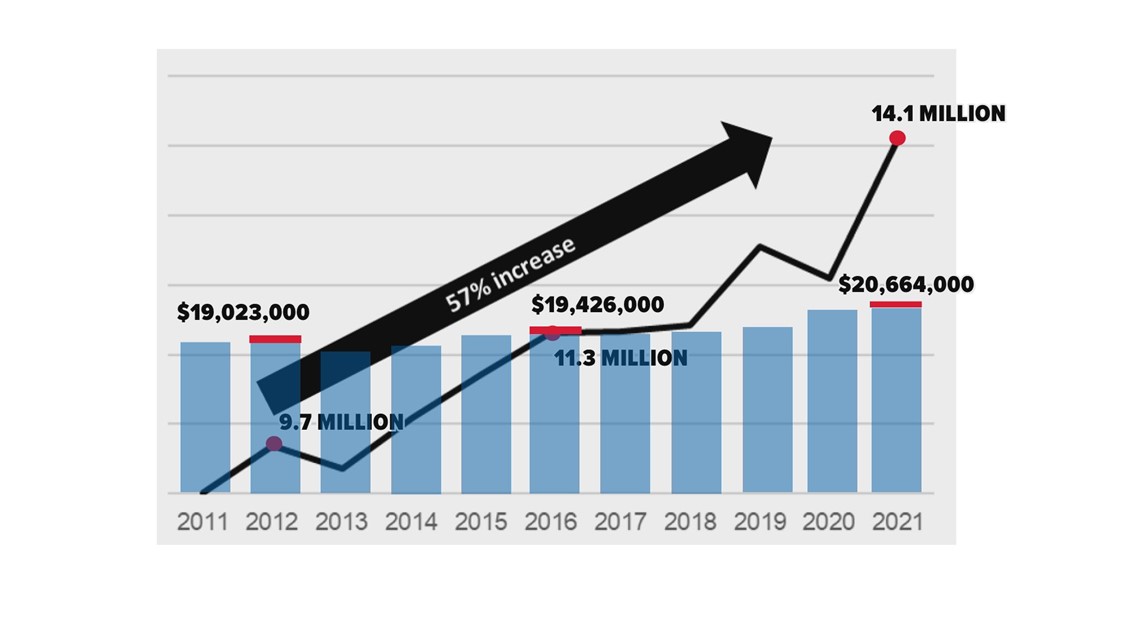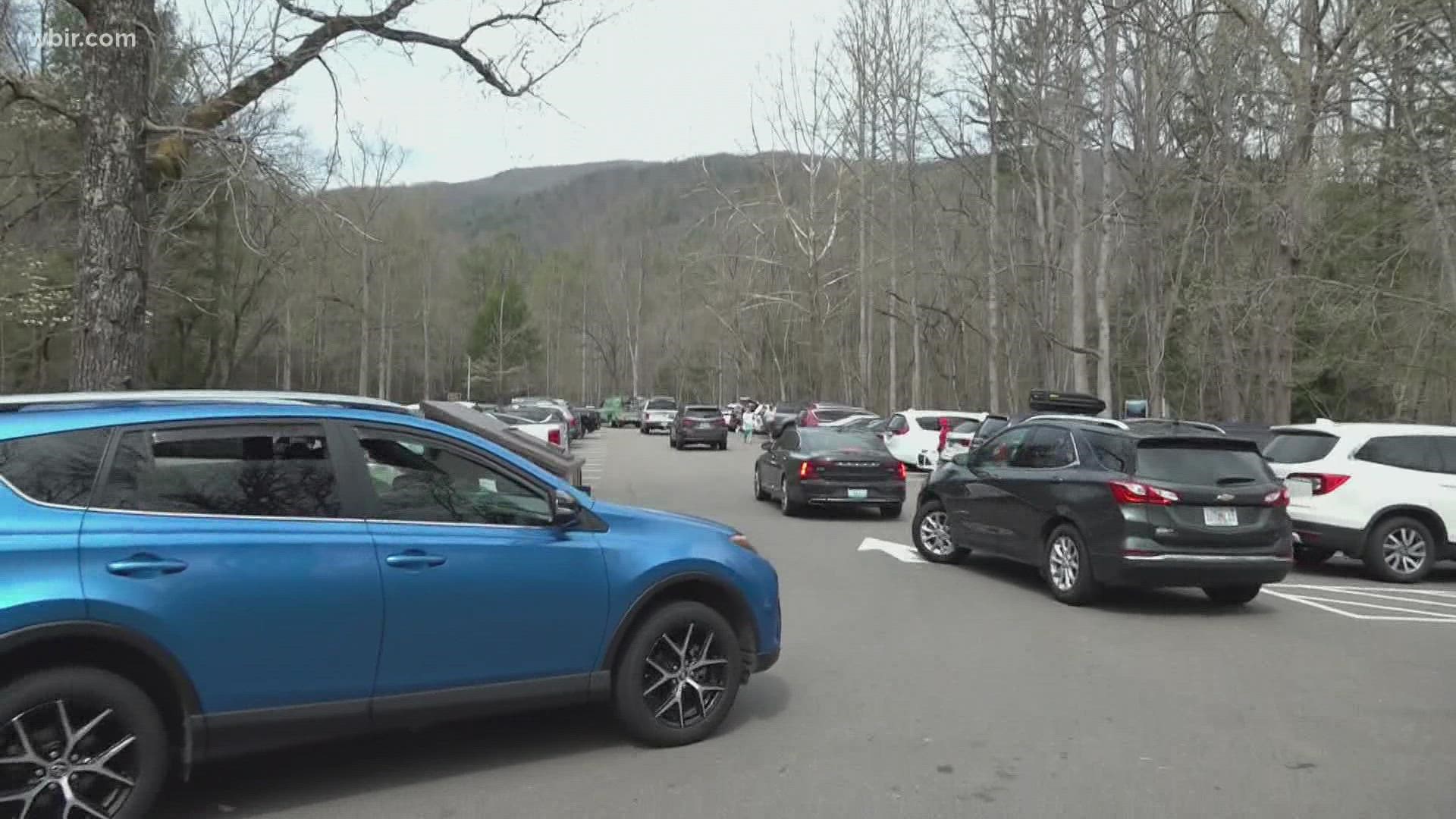Pay to park: Sweeping changes in the Great Smoky Mountains
A new program called Park It Forward would charge visitors to park in the national park and generate around $10-15 million per year.

Anyone who wants to park their car, truck or motorcycle in the Great Smoky Mountains National Park will soon have to pay for a parking tag if a new proposal for a program called Park It Forward passes.
Early numbers suggest the Smokies Parking Tag program would operate as a 3-tier system. A full-day parking tag would be $5, a 7-day tag would be $15 and an annual tag would be $40.
With 4,500 parking spaces in the park, the projected revenue gain would be around $10-15 million per year.
The proposed rates and tag duration were determined by comparing rates for similar access on private and public lands, according to a release from the park. The average parking rate in gateway communities that charge parking fees is $15 per day and $68 per month, according to the park. In National Park sites where parking fees are charged, the average rate is $9 per day and $50 per year.
Great Smoky Mountains National Park Superintendent Cassius Cash said visitors would be able to get tags online, in the mail or fee machines in the park. He hinted at the potential for partnerships with nearby hotels, businesses and communities.
All motor vehicles parking in designated parking spots within park boundaries would be required to display the parking tag, according to the park. It would not guarantee a parking spot at a specific location. Parking would continue to be available on a first-come, first-serve basis throughout the park.
Officials said unofficial roadside parking would be eliminated to help protect resources, improve motorist and pedestrian safety and improve traffic flow through congested areas.
Starting out the park is aiming for a 30% compliance rate that will increase over the years.
"This is an educational component. We want to work with our visitors. This is by no means to be a barrier to come into the national park," Great Smoky Mountains National Park Superintendent Cassius Cash said.
The park said the tags would not be required for motorists experiencing the park through a scenic drive or using park roads as a commuter route. They would also not be required for pedestrians or cyclists.
“This is a real opportunity for each person who visits and uses the park to contribute towards its upkeep. It will provide a sustainable year-round source of funding for the park to meet the needs of today and tomorrow,” Cash said in a video.
Officials with the park held a virtual public meeting on April 14, where they talked about the program. During the meeting, officials said the program could help them raise up to $15 million per year, with around 4,500 parking spaces available in the park.
A "no fee" history
Across the national park system, money comes in through concessions, entrance fees and donations.
In its current state of operation, the Great Smoky Mountains does not have a fee or robust concessions to boost revenues outside the park. Officials said the lack of concessions was by design and has been a successful model with $50 returned to the region for every $1 of federal investment.
It does have a strong donor base, but officials said the philanthropic contributions alone cannot meet all of the park's financial needs.
Friends of the Smokies alone provides roughly $3-5 million per year based on the park's needs.
"Over the years, we've gone from providing the margin of excellence for historic preservation and other special projects inside the park to covering the daily maintenance needs of the park because the park did not have enough in revenue to support those efforts on a day to day basis," Executive Director Tim Chandler said.
Chandler said the extra revenue for the park could allow the organization to focus funding on special projects again.
The park does have a fee for campsites.
As part of the proposal, the park recommended increasing backcountry camping fees from $4 per night to $8 per night, with a maximum of $40 per camper, based on cost comparability information and operational needs.
It also proposed standardizing front country fees across the park. Family campsites would be $30 per night for primitive sites and $36 per night for sites with electrical hookups. Additional front country fees proposed to be increased include group camps, horse camps and picnic pavilions by between 20 and 30% depending on size and location. Rates for daily rental of the Appalachian Clubhouse and Spence Cabin in Elkmont are proposed to be a standard daily rate. More information is available here.
The Great Smoky Mountains is the only national park of its size in the country where visitors don’t have to pay an admission fee. There are roughly a dozen national parks in the U.S. with no entrance fee, but they are all small compared to the Smokies including Channel Islands National Park, Hot Springs National Park and Mammoth Cave National Park.
Around 85% of the land in the park came from 18 logging companies. The rest came from 1,200 landowners who transferred their farmland. None of the deeds had restrictions on charging fees in the park.
It does not have an entrance fee due to state and federal actions. In 1951, the state of Tennessee transferred Little River Road and Newfound Gap Road to the park with a deed restriction preventing tolls on either road. Then in 1994, a federal law, Title 16, prevented entrance fees as long as toll roads were outlawed.
An entrance fee would take an act by the Tennessee State Legislature. A parking fee, however, is left to the discretion of the National Park Service. The park would remain entrance fee free under the proposal.
Why now?
Despite being the most visited national park in the country with 14.1 million tourists in the last year, the Smokies’ budget has remained relatively flat. From 2011 to 2021, it hovered around $19-20 million as park visitation grew by 57%.
“As you would imagine, it requires more resources to deal with the extra wear and tear on our trails, on our picnic areas, restrooms and historic cabins,” Cash said. “The park is feeling the strain. Our staff is feeling the strain.”
The last major infrastructure upgrades came in the 1930s and 1960s, meaning wastewater treatment and freshwater sources are beyond their life cycle. The strain on park employees, infrastructure and natural resources isn’t sustainable despite the dedicated funding of the Great American Outdoors Act.
In August 2020, the Great American Outdoors Act was signed into law, as a short-term fix to address the maintenance backlog across the national park system. For 5 years, it would use energy development revenues to provide up to $1.9 billion per year for “needed maintenance for critical facilities and infrastructure in our national parks, forests, wildlife refuges, recreation areas, and American Indian schools.”
In the Great Smoky Mountains, $30 million went to pave the Foothills Parkway, but the park has $200 million in deferred maintenance projects alone.


All revenue generated through the user fees would remain in the Smokies to directly support operational costs for managing and improving services for visitors including trail maintenance, custodial services, trash removal, and supporting more law enforcement staffing across the park, according to a release.
For context, Zion National Park in Utah is the second most visited park with more than 5 million guests in the last year. It requires visitors to purchase recreational use passes upon entry along with commercial tours. Yellowstone National Park in Montana is the third most visited park with 4.9 million visitors in 2021. It also charges entrance fees.
"This park turns 100 years old in 2034. So now, what we're doing is ensuring that as we enter into the next century of service here at the Smokies, that we provide a sustainable revenue source for our successors and for that next generation of people that's going to enjoy what we call the Great Smoky Mountains National Park," Cash said.
What's next?
From April 6 to May 7, the park said it would gather public input and entertain changes to the proposal. It is accepting online and written comments.
Online comments can be submitted here. Select “Open for Comment” on the left menu bar, open the Proposed Smokies Fee Program Changes for 2023 folder, and click on the green “Comment Now” button to access the online commenting form.
Written comments can be sent to:
Superintendent Cassius Cash
Attn: 2023 Smokies Fee Program Changes Proposal
107 Park Headquarters Road
Gatlinburg, TN 37738
On April 14, the park will host a virtual public meeting to discuss the proposal from 5 p.m. to 6 p.m. accessible through this link. Officials recommend logging in 5-10 minutes early to test audio and internet connections. Participants can also call in on listen-only mode, and not view the presentation, by dialing 929-436-2866 and entering passcode 980 8025 4376#.
On Oct. 1, a submitted plan will be decided on by National Park Service Director Chuck Sams.
For 6 months after the final decision, if the project moves forward, the park will run a public education campaign.
Around the winter or spring of 2023, Great Smoky Mountains National Park visitors must pay to park if the plan is adopted.
“This park was built on sacrifice and people working together,” Cash said. “The people of North Carolina and Tennessee have carried the weight of creating the park. Now it’s time to call on the country, the millions of visitors who enjoy this space to help shoulder the responsibility for what’s carrying it to the future. It is time to give back to the park that gives so much to us.”


